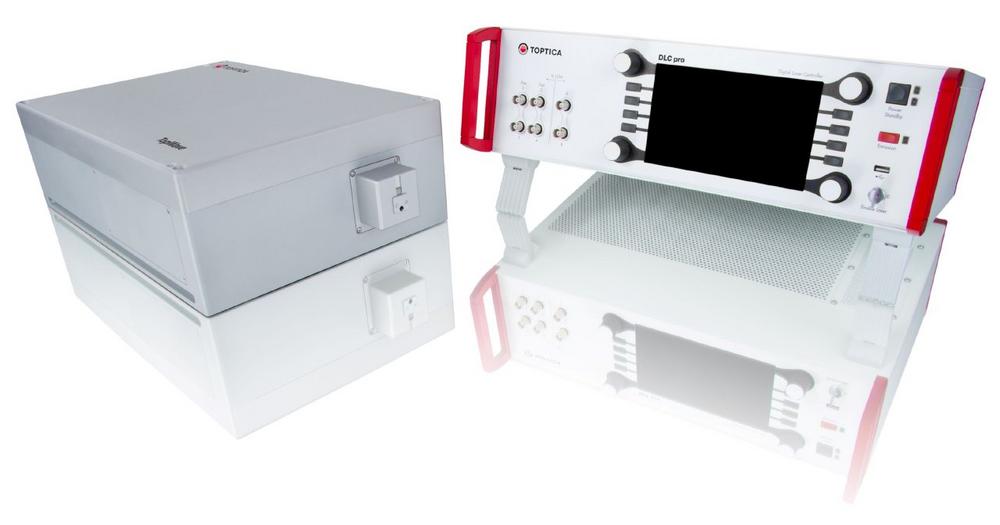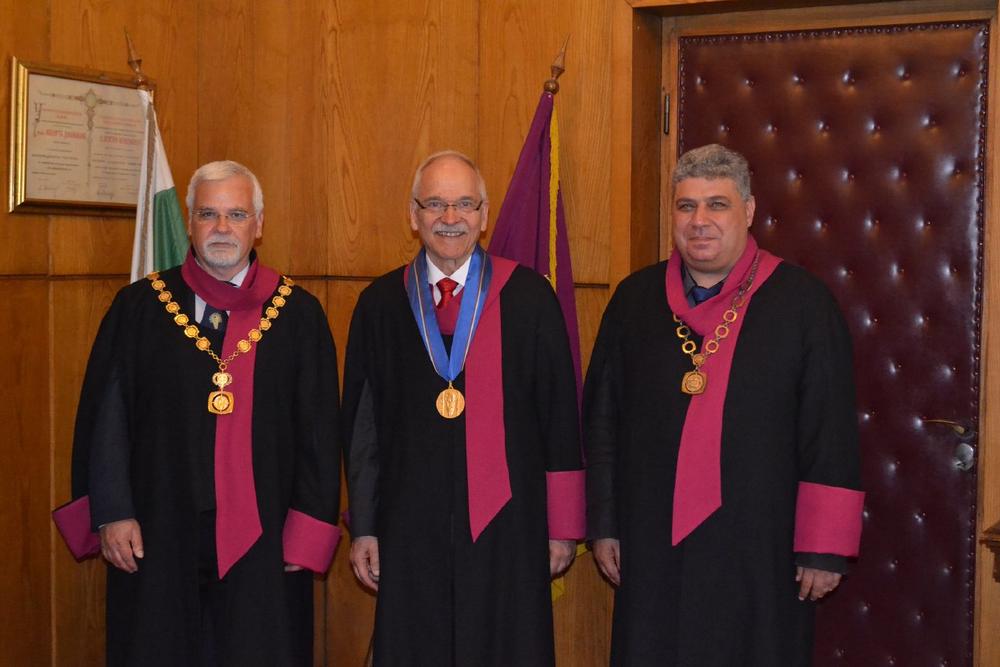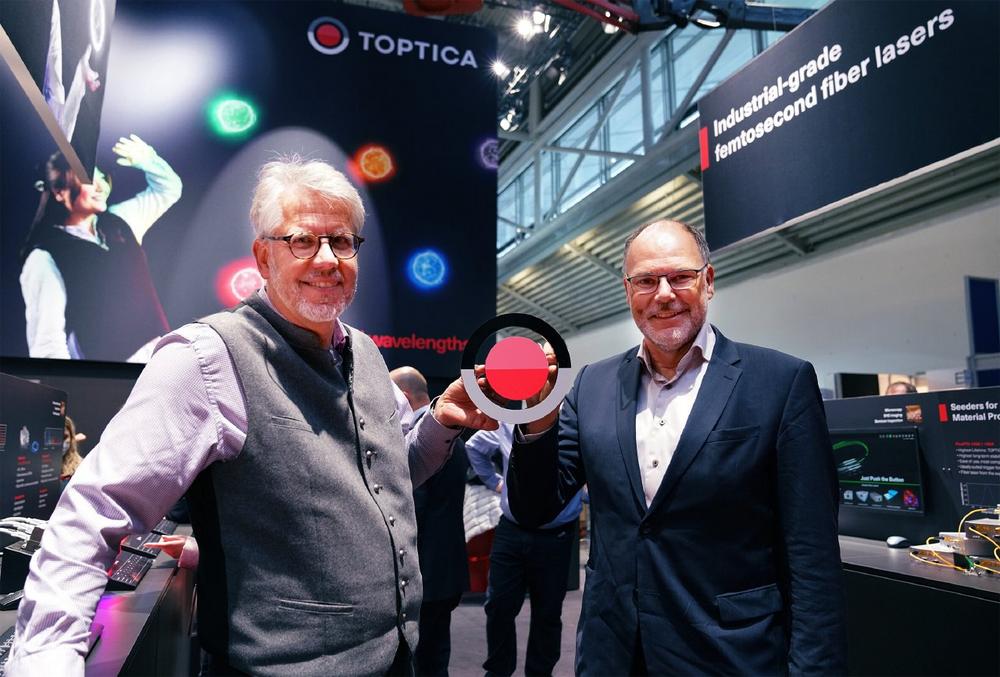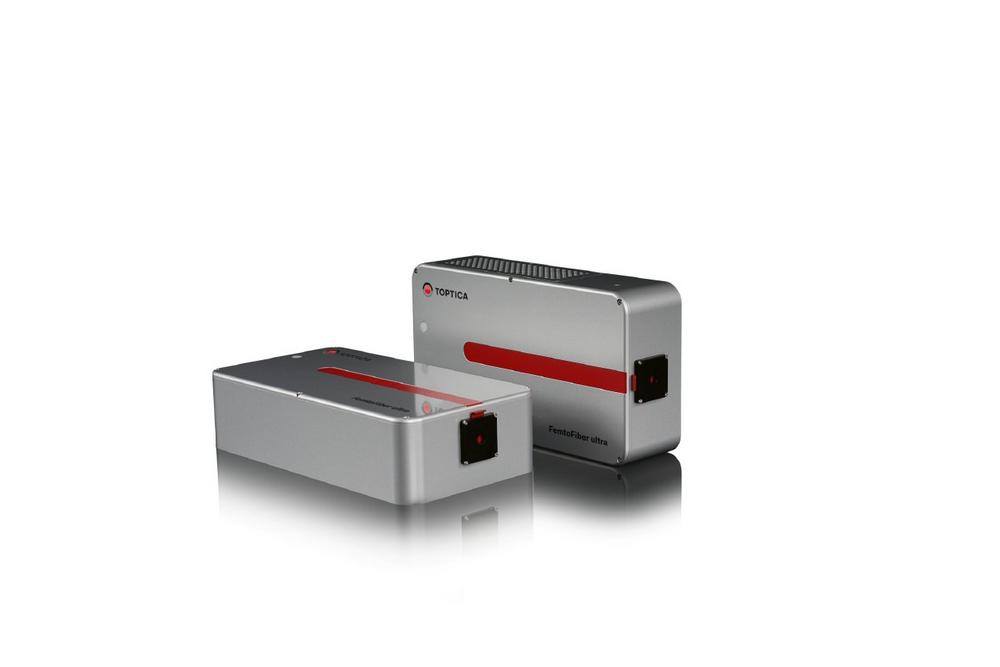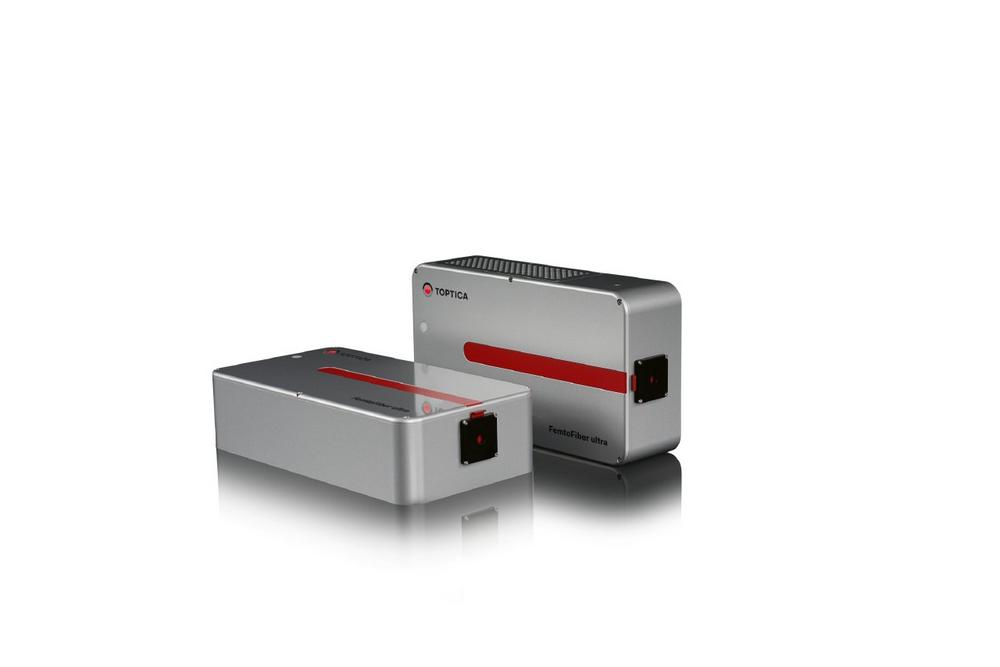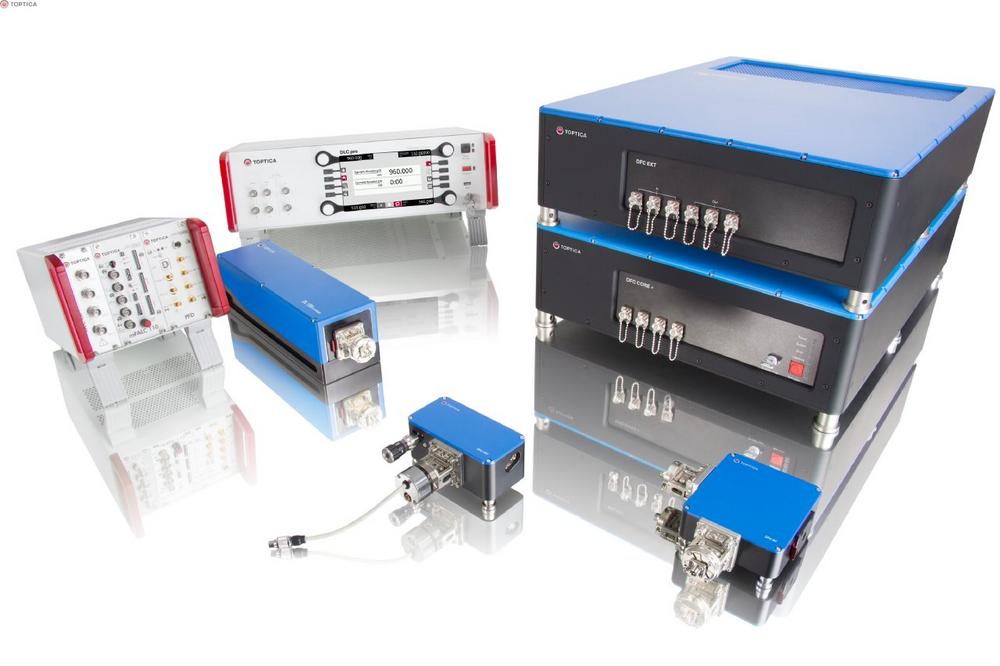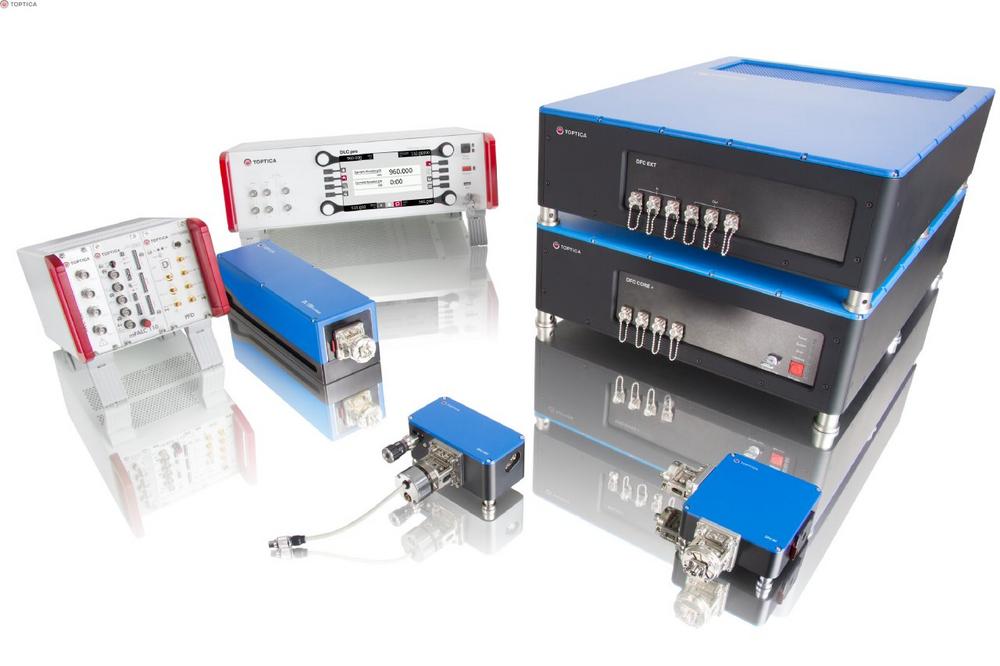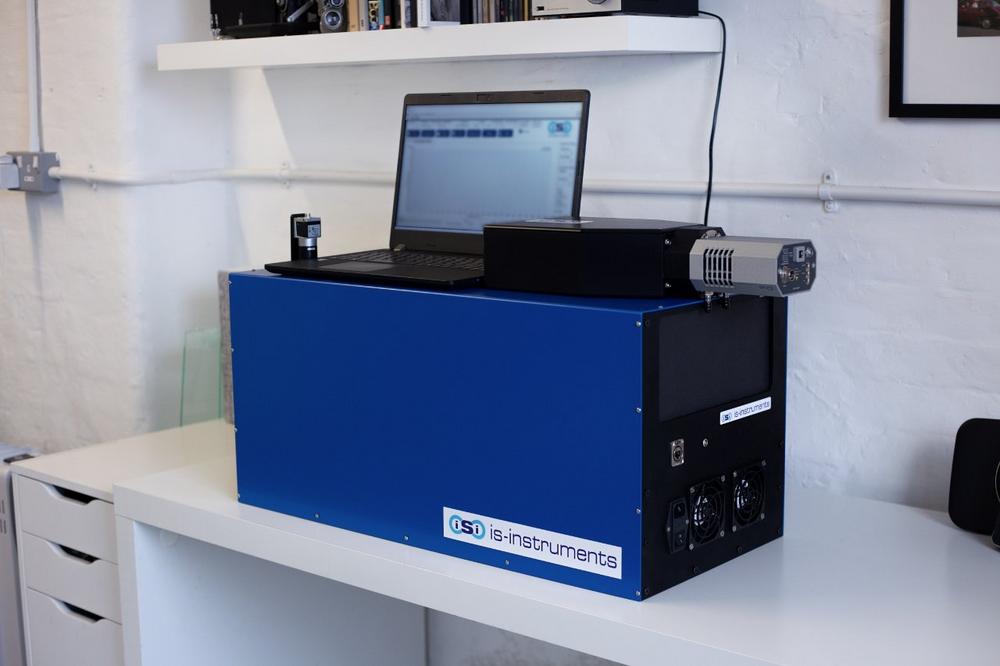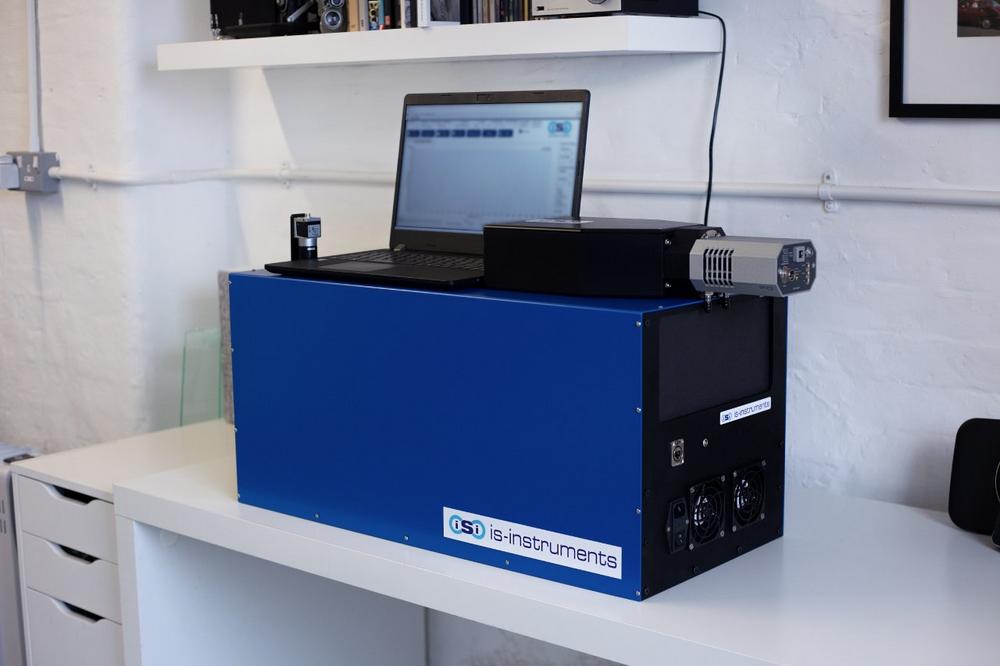-
TopWave 229 – Industrial CW Laser for Deep UV Raman
With the new TopWave 229, TOPTICA presents the latest addition to its industrial deep UV laser lineup at analytica in Munich. The TopWave 229 is an exciting new choice for deep UV spectroscopists looking for an easy to use and reliable laser that enables the user to focus on their application rather than worrying about the light source. With its short wavelength and an ultra-narrow laser linewidth, the TopWave 229 provides the key features (< 1 MHz ≙ < 4 x 10-5 cm-1) to take on an important role as excitation source in the field of deep UV Raman and deep UV fluorescence spectroscopy. Fluorescence free Raman Excitation below 250…
-
Honorary Doctorate Degree from Sofia University for Klaas Bergmann
With this award, Sofia University not only honored Bergmann’s research achievements, but his commitment to the integration of colleagues from Eastern Europe into the European research landscape. With Prof. Dr. Nikolay. V. Vitanov, Vice-Rector of the University of St. Kliment Ohridski, Sofia/Bulgaria, there has been a close partnership for many years, which is also supported by the German Research Foundation (DFG). Further active and productive collaborations exist with colleagues from Yerevan (Armenia), Riga (Latvia) and Kiev (Ukraine). Not only from this circle, many visiting scientists and students came to TU Kaiserslautern every year to collaborate experimentally and theoretically on the research projects. Klaas Bergmann received his doctorate from the University…
-
TOPTICA Renews its Brand Presence
TOPTICA presents itself stronger than ever with a fresh new look. The brand design was launched for the first time this year at the international industry meeting LASER World of Photonics in Munich. TOPTICA, as one of the key innovation drivers in the laser industry is presenting the company in a novel way to ensure even greater visibility and to highlight the brand’s key position in the market. New brand design reflects successful development “The driving force behind TOPTICA’s success story, which continues to this day, was and is TOPTICA’s ability to actively shape the future as a technology leader in its industry. Our company is a reliable partner for…
-
New Laser Wavelengths for Microscopy and Measurement & Processing
TOPTICA’s cutting edge laser systems combine world class specifications with highest precision, reliability, and longevity. TOPTICA will display their latest laser systems for scientific and industrial applications at LASER World of PHOTONICS in Munich from April 26–29, 2022 at Messe München, hall B5.103. Dedicated laser solutions for Quantum technology will be shown at the WORLD of QUANTUM, visit our satellite booth in hall B5.171. We highlight our Lasers for Biophotonics and Industrial Measurement and Processing of this year’s LASER World of PHOTONICS. More live demos for Quantum Technology can be expected at our booth. FemtoFiber ultra 1050 & 780 – Femtosecond fiber laser for 2-photon applications The revised systems FemtoFiber…
-
Neue Laser-Wellenlängen für Mikroskopie, Messtechnik und Fertigung
TOPTICAs hochmoderne Lasersysteme vereinen Weltklasse-Spezifikationen mit höchster Präzision, Zuverlässigkeit und Langlebigkeit. TOPTICA stellt seine neuesten Lasersysteme für wissenschaftliche und industrielle Anwendungen auf der LASER World of PHOTONICS in München vom 26. bis 29. April 2022 in der Messe München, Halle B5.103, aus. Spezielle Laserlösungen für die Quantentechnologie werden auf der WORLD of QUANTUM zu sehen sein, auch dort sind wir mit einem Stand in Halle A4.171 vertreten. Die Schwerpunkte der diesjährigen LASER World of PHOTONICS sind unsere Laser für die Biophotonik und die industrielle Messung und Verarbeitung. Weitere Live-Demos zur Quantentechnologie sind an unserem Stand zu erwarten. FemtoFiber ultra 1050 & 780 – Femtosekunden-Faserlaser für 2-Photonen-Anwendungen Die optimierten Systeme FemtoFiber…
-
Neue Laser für Quantenanwendungen
Mit modernster diodenlaserbasierter Technologie ist TOPTICA ein wichtiger Wegbereiter für die Quantenoptik und Spektroskopie. TOPTICA wird seine neuesten Lasersysteme für wissenschaftliche und industrielle Anwendungen auf der LASER World of PHOTONICS in München vom 26. bis 29. April 2022 auf der Messe München ausstellen. Spezielle Laserlösungen für die Quantentechnologie werden in der WORLD of QUANTUM gezeigt, TOPTICA ist hier mit einem weiteren Stand in Halle A4.171 vertreten. Wir präsentieren Ihnen unsere Quanten-Technologie-Highlights der diesjährigen LASER World of PHOTONICS. Weitere Live-Demos für Biophotonik- und Materialbearbeitungsanwendungen werden an unserem Stand zu sehen sein. Frequenzkamm-Lösungen: Stabilisieren Sie Ihre optischen Frequenzen TOPTICA bietet komplette Lasersystemlösungen für Ihre Quantenanwendung aus einer Hand. Dazu gehören ein optischer…
-
New Lasers for Quantum Applications
Using state-of-the-art diode-laser-based technology, TOPTICA is a key enabler for quantum optics and spectroscopy. TOPTICA will display their latest laser systems for scientific and industrial applications at LASER World of PHOTONICS in Munich from April 26–29, 2022 at Messe München. Dedicated laser solutions for Quantum technology will be shown also at the WORLD of QUANTUM, visit our satellite booth in hall B5.171. With this press release we present our Quantum Technology highlights of this year’s LASER World of PHOTONICS. More live demos for biophotonics and material processing applications will be represented at our booth B5.103 Frequency Comb Solutions: Stabilize your optical frequencies TOPTICA offers complete laser system solutions for your…
-
Dr. Reto Häring Appointed as Senior Vice President of Research and Development at TOPTICA
Effective April 1, 2022, Dr. Reto Häring has been appointed Senior VP of Research and Development at TOPTICA Photonics AG taking over the helm of a scientific and engineering division of currently 95 people. Previously, Dr. Häring (51) was Vice President of Customer Solutions at Instrument Systems GmbH, a leading technology company for light measurement engineering and industrial quality assurance for displays, LEDs, and other light sources. He initially earned his doctor’s degree in the field of femtosecond laser development and optical semiconductor components at the Institute for Quantum Electronics at ETH Zurich, working with Professor Ursula Keller. Dr. Wilhelm Kaenders, President and Founder of TOPTICA, is excited to welcome…
-
Raman-Spektroskopie im tiefen UV: Messung von Immunglobulinen ohne Schädigung der Probe
Das System kombiniert den neu entwickelten Tief-UV-Laser TopWave 229 und ein räumlich aufgelöstes Heterodyn-Spektrometer mitsamt einer einzigartigen vollreflektierenden Rückstreu-Raman-Sammelsonde in einem kompakten Gerät. Die Beschädigung der Proben durch eine längere UV-Laserbestrahlung wurde durch die Einführung eines dynamischen Probenpositionierungstisches entscheidend reduziert. Neues Tief-UV-Lasersystem emittiert bei 228,5 nm Mit seiner kurzen Wellenlänge und einer ultraschmalen Laserlinienbreite (< 1 MHz ≙ < 4 x 10-5 cm-1) liefert der TopWave 229 die entscheidenden Spezifikationen, die an eine Anregungsquelle im Bereich der UV-Ramanspektroskopie und UV-Fluoreszenzspektroskopie gestellt werden. Das neue Raman-Spektrometer ODIN erlaubt es, Spektren in einem Bruchteil der Zeit die bisher verfügbare Systeme benötigen aufzunehmen und besticht darüber hinaus durch seine Stabilität, Kompaktheit und Benutzerfreudlichkeit. Im Zuge…
-
Deep UV Raman Spectroscopy: Measuring Immunoglobulin without Degrading Sample
ODIN is a new, compact, and reliable deep UV resonant Raman instrument developed by IS-Instruments (IS-I) and TOPTICA for measurement of biopharma products. The system combines the newly developed solid state diode laser TopWave 229 and a spatial heterodyne spectrometer integrated into a single instrument with a unique all-reflective backscatter Raman collection probe. Sample damage caused by extended laser exposure has been mitigated via the introduction of a dynamic sample positioning stage. New deep-UV laser system, operating at 228.5 nm The TopWave 229 is an exciting new choice for deep UV spectroscopists looking for a reliable laser that enables the user to focus on their application rather than worrying about…

